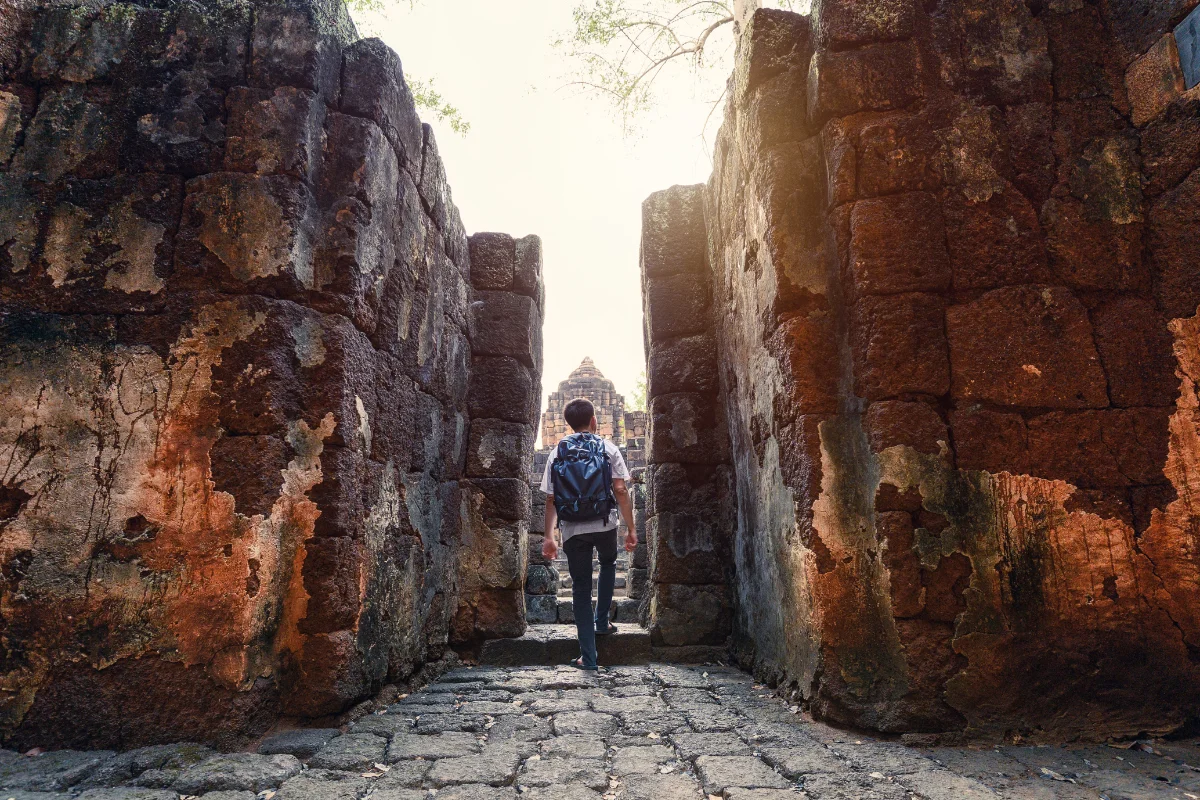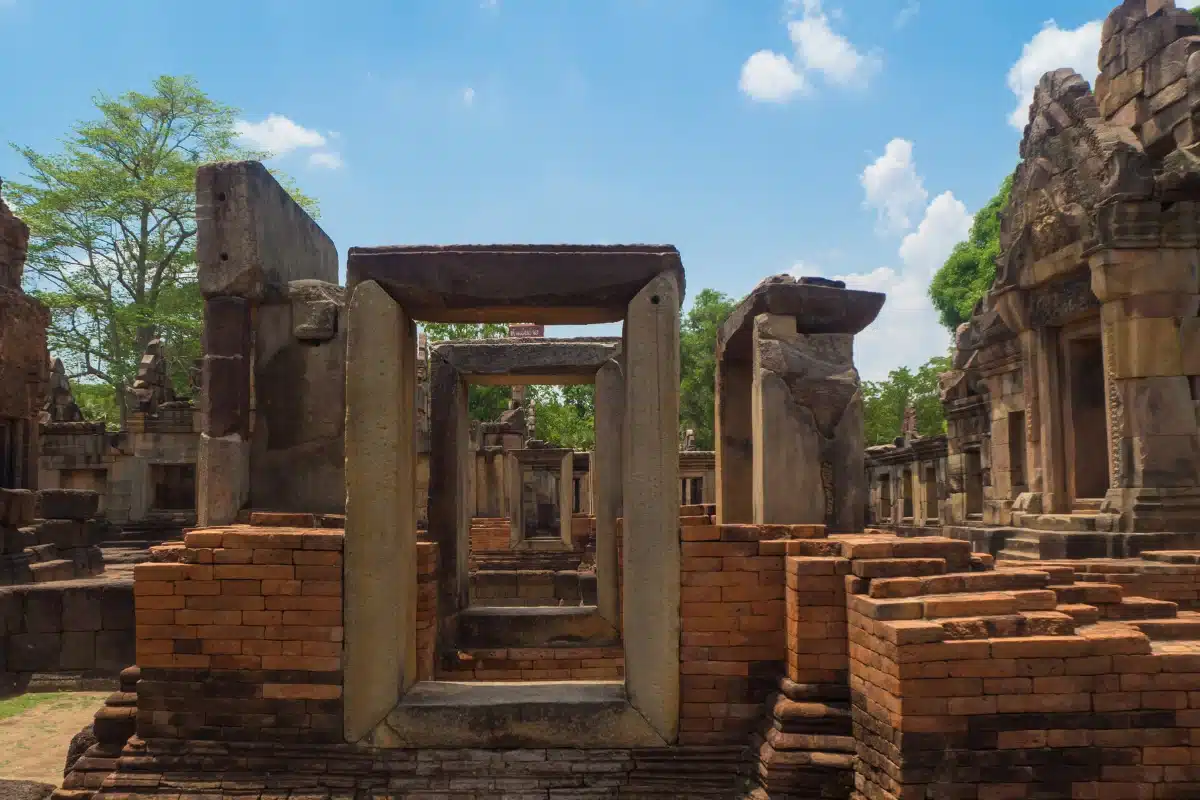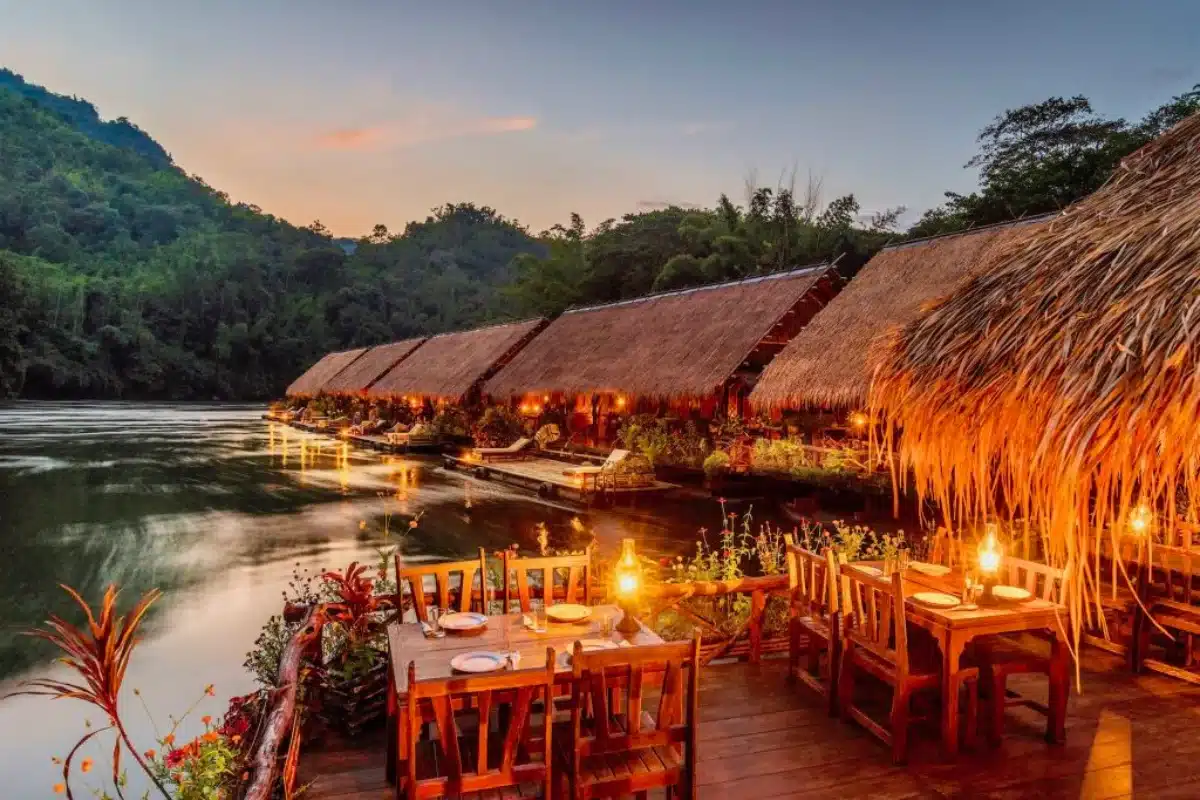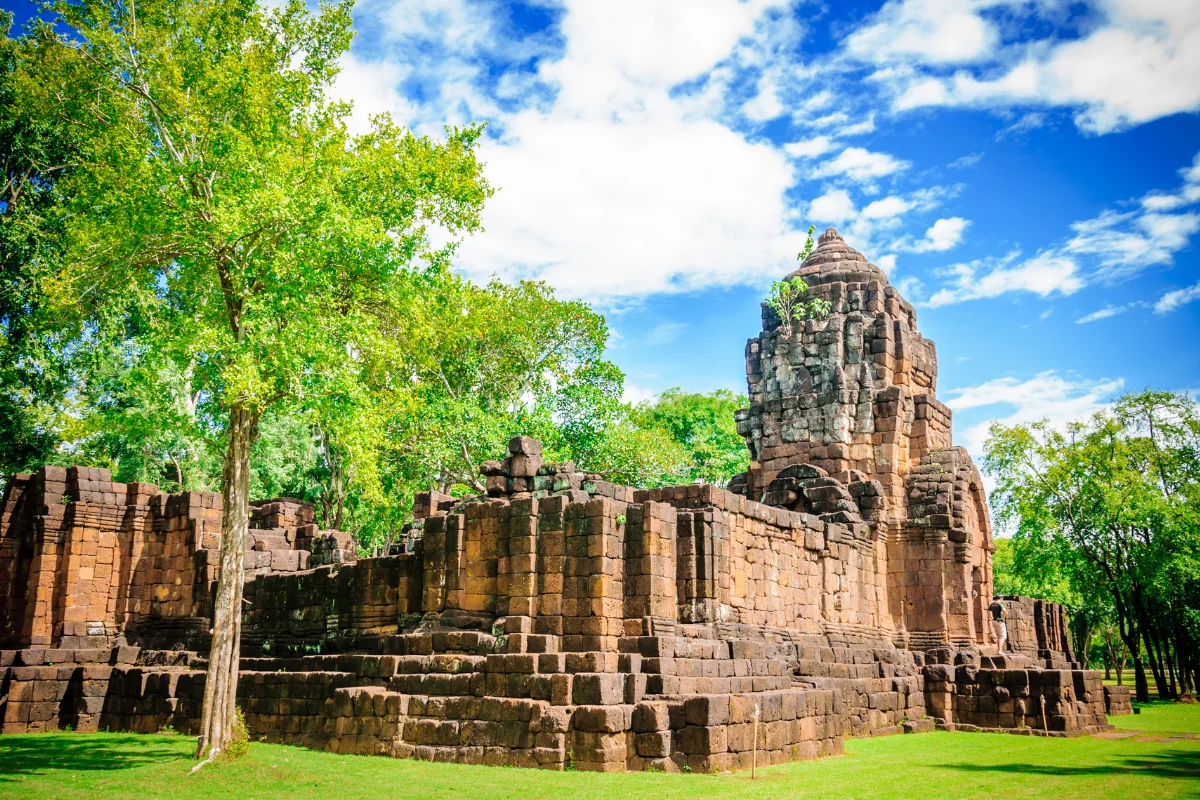Kanchanaburi Province is not only famous for its natural attractions, but historical tourism is also popular here. This is because Kanchanaburi is an important province filled with many historical stories. One of these is Muang Sing Historical Park, an ancient city located along the Khwae Noi River. If you enjoy this style of travel, Muang Sing Historical Park in Kanchanaburi is highly recommended.
The History of Muang Sing Historical Park

Muang Sing Historical Park was established as a Mahayana Buddhist religious site. Inside, there is architecture and sculpture similar to the style during the reign of King Jayavarman VII, the great temple-building Khmer king. Excavations at the site by the Fine Arts Department uncovered many significant historical artifacts, such as the Naga-Protected Buddha image, Avalokitesvara Bodhisattva, and the goddess Prajnaparamita. They also found images of Avalokitesvara that resemble those found in Cambodia. According to the stone inscriptions from Prasat Preah Khan in Angkor, Cambodia, recorded by Prince Virakumara (the son of King Jayavarman VII), there were 23 cities established by the king, one of which is “Sri Chai Singhburi,” presumed to be present-day Muang Sing.
Ancient Monuments Within Muang Sing Historical Park

Upon entering Muang Sing Historical Park, tourists will find multilingual QR codes Thai, English, French, Japanese, and Chinese providing complete information about each ancient structure. To enhance your experience before visiting, here are the key monuments inside the park:
Monument No.1
This is the most complete part of the ancient site. The structure is built from laterite and enshrines a radiant Avalokitesvara Bodhisattva with eight arms. Behind the main tower, at the rear gopura, stands a statue of the goddess Prajnaparamita. Near the main prang is the “Bannalai,” which was used to store Buddhist scriptures in ancient times.
Monument No.2
Located to the northwest of Monument No.1, this site shares a similar design, with a central prang and four gopuras. It is also the site where sacred Hindu statues have been discovered.
Monument No.3
Positioned outside the main wall, this monument is a smaller structure made of bricks and laterite. The Fine Arts Department believes these to be two ancient stupas.
Monument No.4
This is a rectangular-shaped building consisting of four rooms aligned from north to south. Like the others, it was constructed mainly from laterite.
Conclusion

For tourists who want to explore the beauty and history of Muang Sing Historical Park in detail, the site is open daily from 08:00 to 16:30. In addition to this historic site, Kanchanaburi is home to many other important landmarks. We recommend staying at River Kwai Jungle Rafts, a famous floating resort in Kanchanaburi. It is located close to many historical attractions, such as Lawa Cave, Hellfire Pass Museum, and the original route of the Death Railway. Staying at River Kwai Jungle Rafts offers both comfort and a deep cultural experience, making your visit to Kanchanaburi truly unforgettable.

